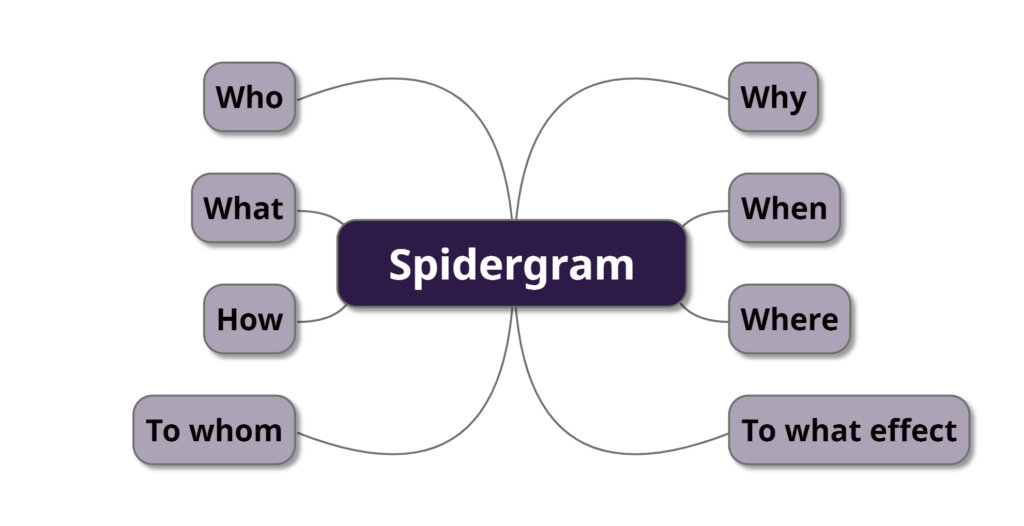We’re making our way through 2021, and have settled back into the office. For many, this means it’s time to get back into report writing. It’s a professional skill of fundamental importance and doesn’t need to be feared!
Last December we asked our LinkedIn followers “How do you prepare for report writing?”. The results were an even split between using graphical tools like flowcharts, doing some preliminary investigation and researching the topic online, and finally just ‘winging it’ (which we politely and professionally referred to as ‘minimal planning’!). Surprisingly, no one identified making a list of important points to include.
There is a variety of approaches, planning systems, and creative techniques available when preparing for report writing. But what if there was one tool which combined the best of these existing options including:
- A list of your key points.
- A stunning graphical tool.
- A starting point for further research.
The good news is – there is! Enter the spidergram.

In our recent blog, What are Mind Maps – why and how to use one, we briefly introduced the key idea of spidergrams as pre-structured mind maps.
Each of the spidergram’s legs covers a different core element of professional writing, which when brought together, provide the basics of a cohesive and effective report. The spidergram’s pre-populated nature means you’ll always have the report’s main requirements listed to expand on, meaning it’s particularly helpful when embarking on new reports or any other written piece of work where there’s no existing guidelines or proposed template to follow.
Your report planning journey beings, quite simply, with your report’s main idea at the middle and is extended when moving through the “leg’concepts of which there are eight. Remember, this is a planning tool you can edit at any stage meaning your first draft doesn’t have to be complex or perfect.
Who, why, & what
These are the most basic parts of your report, which determine its style. Think about the below:
- Are you writing as an individual, or a brand?
- Why are you writing the report?
- What do you wish for the audience to take away from it?
- What do you want your audience to learn?
These questions will establish the report’s purpose, allowing you to then conclude what your report’s content (the ‘what’) will be. This up-front clarity will keep your report concise.
When, how, & where
We all know the importance of goal setting and scheduling, so plan for your deadlines early!
This includes thinking about:
- A date for your proof copy. Draft copies aren’t meant to be half-completed, they’re for proofing the content and checking for errors.
- How will you submit or publish your work? An all too often over overlooked stylistic choice is the choice of presentation medium. Sometimes a plain document is mandated, other times some flexibility may be afforded, especially with more creative work such as contacting clients or promoting an event.
- The choice of communication channel or platform which will influence where your work is published or presented.
To whom & to what effect
It’s important to tailor your report to your audience’s expectations and needs. While font type, size and spacing choices may be disregarded as trivial, the fact is they may facilitate your message being received by ageing or dyslexic audiences.
In addition, arguably the most important branch of the spidergram is highlighted here:
- What is the desired outcome of your audience reading your work?
- What do you want them to do?
This might take the form as a call to action, or alternatively embedding a proposal throughout the document. Every document exists for a reason – either to inform or motivate. Choose your document’s purpose, and tailor your content to achieve it.
In conclusion
These categories aren’t hard and fast rules but represent what we’ve found to be most effective when preparing for our own projects. Even if you have only a few minutes to plan your work, we highly recommend using a planning tool like the spidergram or mind map to help organise your thoughts. Every bit of preparation helps, and with these tools, you can improve the quality and succinctness of your work.







